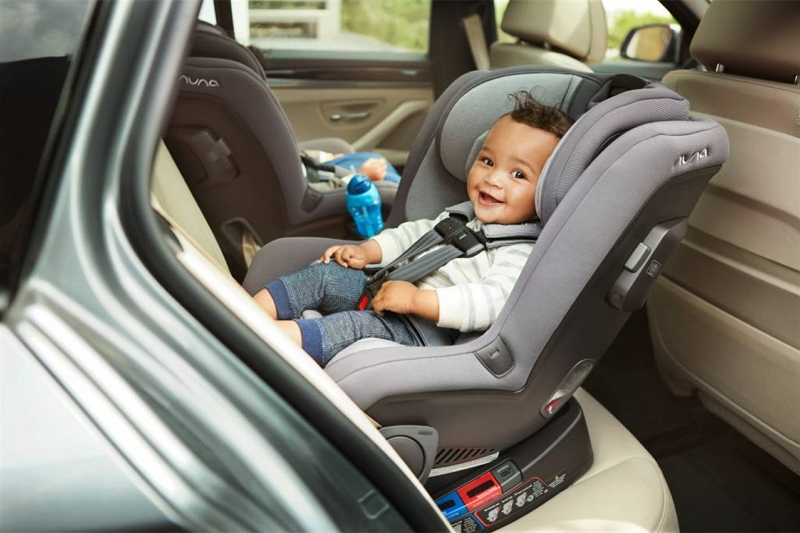When should I get a bigger car seat? If your child is heading to the next size up you might be wondering when it’s time for a bigger car seat.
It can feel like she has outgrown her infant carrier before she has even hit 12 pounds! Well, don’t fret. There are plenty of things that go into deciding when your little one should move on from their baby car seats and how much they weigh doesn’t necessarily dictate what stage they’re in developmentally (or which weight limit on their new ride).

There are lots of factors that affect when kids graduate beyond an infant or convertible car seat including physical height, emotional maturity, cognitive understanding and developmental milestones. While there isn’t really any age-related magic number at which all kids graduate, there are some milestones that indicate it’s time to move up.
How many different car seats does a baby need?
There is only one car seat that new parents need to buy. It’s called the infant-only seat or convertible car seat. Infant seats are rear-facing and made for babies who weigh less than 22 pounds (or about 12 months old).
Parents can use them in their cars during travel, but they’re also portable enough to bring into someone else’s vehicle if needed (such as a taxi cab) without having to transfer an entire base system from your own vehicle.
Once the baby outgrows his infant seat it converts into a forward-facing toddler booster which allows you another year of usage before moving on again with the next stage of safety equipment for kids known as harnessed boosters.
These last until roughly age eight after which children will be ready to ride in just a regular seatbelt until they are teenagers. So, the answer is no — you only need one car seat for your child’s first year of life.
Some people ask if it isn’t easier to skip all this carseat-hopping and have children simply wear their seatbelts from birth?
Well, while some countries have laws allowing that option (e.g., Sweden), most U.S states require rear facing seats because infants’ underdeveloped muscles cannot handle forward impact as well as adults can since their neck vertebrae are not fully formed yet compared with an adult’s which are more able to absorb impacts during accidents better than delicate infant spines without injury or permanent damage even at high speeds.
It is also true that the rear-facing seats provide more protection to children’s head and neck (which can be especially important for preemies born with underdeveloped respiratory systems), but there are other dangers involved as well such as suffocation or breathing difficulties which do not occur in car seats facing backwards since they allow a child to breathe easy thanks to their airway being open — meaning, they don’t have a seatbelt cutting across the front of their throat like adults.
Lastly, it is extremely dangerous if parents carry infants around without them being strapped into strollers because if you trip while holding an infant who is not wearing a safety harness then the baby could fall from your arms at high speed leading to serious injury or even death, but the same is not true if you trip while wearing a child in an infant-only seat since they are strapped into place and therefore do not pose such risks to other people around them.
Should I buy a convertible car seat for each car?
Convertible car seats save money and space. You can switch from rear-facing to forward-facing without having to buy a new seat, whether you’re switching cars or your child grows out of the current position (usually around age four).
And because convertible seats usually last until 40 pounds in rear-facing mode and 20 pounds in front-facing mode, they often replace three different seats for one price: infant, bucket, and booster modes.
Convertibles are also convenient for travelling; if you need to rent a car while on vacation with small children, many companies will let you take along an approved safety seat instead of renting their own at an inflated cost. But remember that not all convertibles fit every car—or even every seat in a car.
You might need to go shopping for an infant seat if yours is too narrow or doesn’t recline enough, and you may have to move your child into booster mode before age four (or even younger) because the harness won’t fit over his shoulders and head properly as he gets bigger.
Convertible seats save money and space but not all of them work with every vehicle so do some research on what will be best for your needs! Remember that they last longer than other types of safety seats so you can use them until smaller children are ready to ride without one.
They also come in handy when traveling since most rental cars require approved safety seats instead of just renting out their own at inflated rates which can be used in both fronts facing and rear-facing modes.
Does the Doona come with an infant insert?
No, but the Doona is designed for infants as young as five pounds. The seat belt system protects your child from premature ejection during a crash and also ensures that they are always positioned correctly in their car seat.
